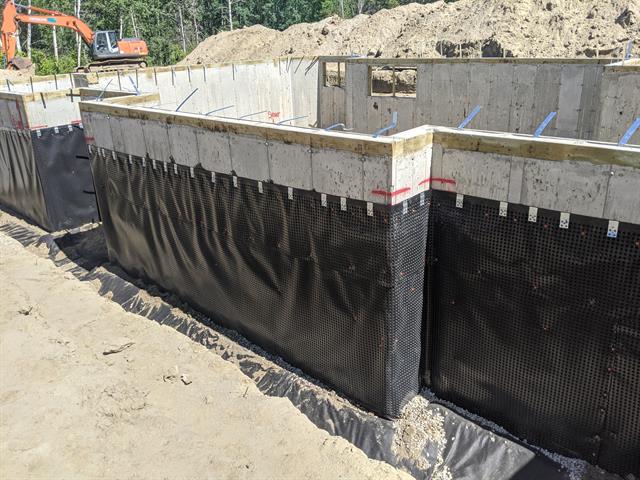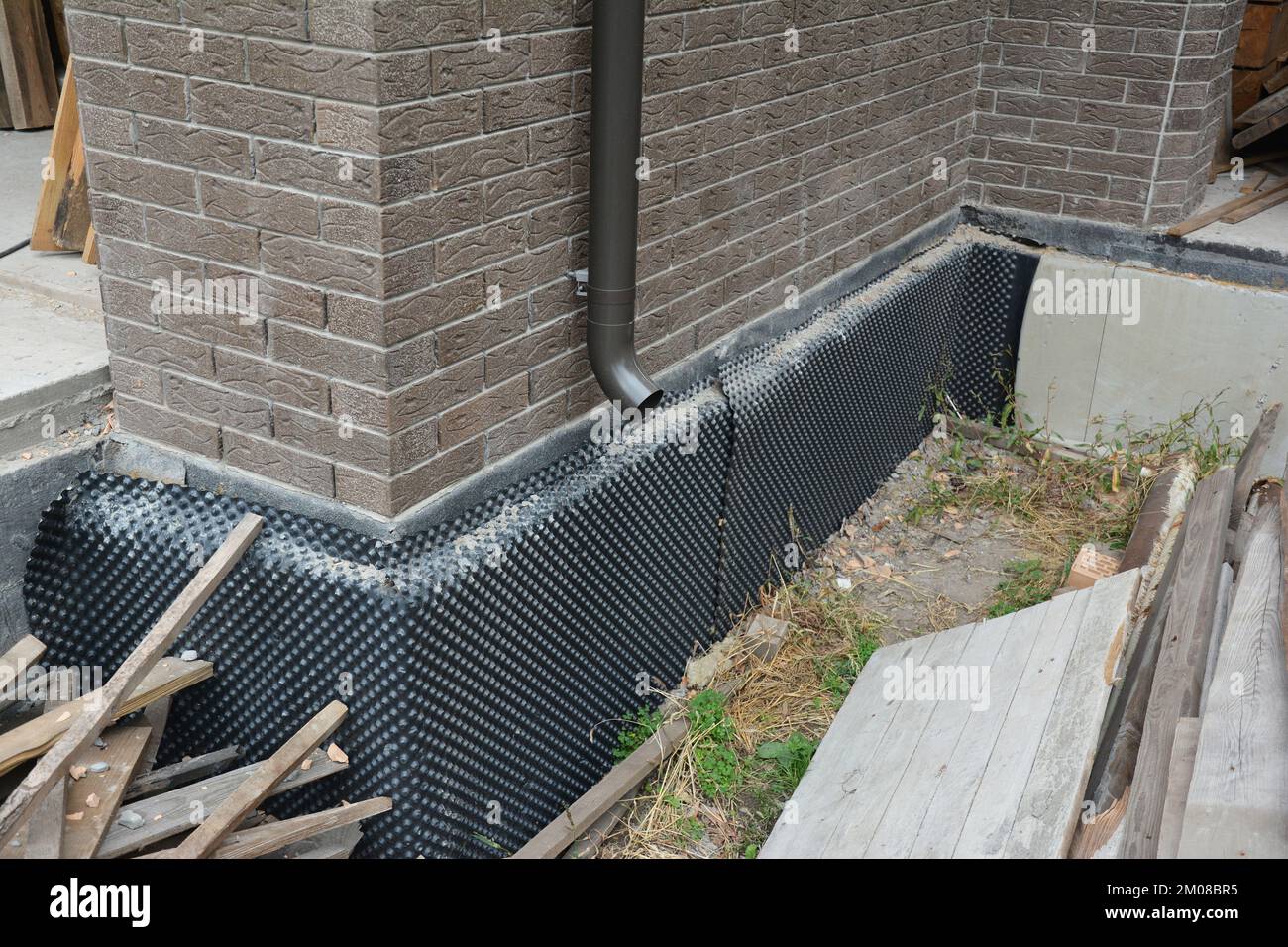Dealing with leaks through mould removal newcastle: What really works?
Dealing with leaks through mould removal newcastle: What really works?
Blog Article
Exploring the Various Strategies and Solutions for Effective Damp Proofing
Moisture in structures postures substantial obstacles to both structural integrity and interior air top quality. Numerous methods and remedies have actually arised to fight this prevalent problem. From conventional damp-proof membranes to cutting-edge chemical treatments, each method supplies unique benefits. Comprehending these options is essential for effective wetness control. Choosing the ideal remedy depends on certain structure problems and demands, prompting further expedition into the most efficient damp proofing strategies offered.
Understanding the Causes of Dampness
Although wetness can emerge from different sources, recognizing these reasons is important for effective removal. Commonly, dampness originates from 3 key sources: increasing damp, penetrating damp, and condensation. Climbing wet takes place when groundwater takes a trip up via porous products, such as brick or stone, often because of a lack of an efficient obstacle (damp proofing newcastle). Penetrating wet is commonly caused by exterior elements, consisting of roofing system leaks, malfunctioning gutters, or damaged wall surfaces, permitting water to penetrate a residential property. Condensation, on the other hand, results from excess wetness in the air, typically exacerbated by inadequate air flow and temperature level differences, causing water beads basing on surface areas. Recognizing these underlying problems is vital, as each kind of dampness calls for a customized strategy for remediation. Appropriate evaluation assists in identifying one of the most reliable solutions, inevitably guarding the structural integrity of a structure and improving interior air quality
Traditional Damp-Proof Membranes

Chemical Damp-Proofing Solutions
Chemical damp-proofing solutions supply a cutting-edge method to stop wetness breach in structures. These techniques usually include the application of fluid chemicals that pass through stonework and develop a barrier against rising moist. Generally used chemicals consist of silanes, siloxanes, and various other water-repellent agents that respond with surface materials to create a hydrophobic layer.The application process generally requires boring openings right into the walls, injecting the chemical option, and enabling it to treat. This method is especially beneficial for older frameworks where conventional damp-proof membrane layers may be unwise. Chemical damp-proofing can be less disruptive and more cost-effective than extensive renovation projects.While reliable, these solutions depend on appropriate application and ecological conditions for peak performance. damp removal newcastle. Routine upkeep and tracking are important to assure the durability of the damp-proofing therapy. In general, chemical damp-proofing represents a functional alternative for protecting buildings against moisture-related damages
Cavity Wall Building Strategies
Cavity wall building strategies offer various benefits, especially in moisture control and energy effectiveness. By incorporating an air void in between two layers of masonry, these wall surfaces effectively mitigate water ingress while boosting insulation. This combination not only safeguards frameworks from dampness however also adds to reduced power usage.
Advantages of Cavity Walls
When thinking about efficient wet proofing techniques, the benefits of dental caries wall surfaces stand out plainly. Dental caries walls include 2 separate layers, developing an air void that properly reduces moisture penetration. This style minimizes the threat of dampness, as the external wall serves as a barrier versus rainfall and water ingress. In addition, dental caries wall surfaces boost thermal insulation, which adds to power performance by decreasing warmth loss. They likewise supply audio insulation, assisting to develop a quieter interior atmosphere. Furthermore, the air space permits air flow, which aids in dampness control and minimizes the probability of mold growth. These advantages not just improve the overall convenience of a building but likewise add to its longevity and structural integrity.
Moisture Control Techniques
Efficient moisture control methods are vital in dental caries wall surface construction to guarantee lasting protection versus dampness. One key technique entails the unification of weep openings, which assist in water drainage from the dental caries, avoiding build-up. Furthermore, making use of breathable membranes can assist handle moisture levels while allowing caught vapor to run away. Appropriate positioning of insulation is additionally vital, as it ought to not obstruct drainage paths. Guaranteeing that the outer leaves of the cavity wall surface are created with waterproof materials boosts general durability. Routine maintenance checks are essential to recognize any kind of blockages or damages early, safeguarding the framework's integrity. Ultimately, a combination of these methods creates a robust protection versus dampness breach in tooth cavity wall surfaces.
Insulation and Energy Performance
Insulation plays a vital function in improving energy efficiency within dental caries wall surface construction. By incorporating protecting materials, these wall surfaces develop a thermal obstacle that reduces warmth loss and lowers energy intake. Efficient insulation not just assists preserve a secure indoor temperature level but likewise reduces the threat of moisture, as it avoids condensation within the wall surface cavity. Various techniques, such as the use of rigid foam boards or mineral wool, can be used to accomplish ideal insulation efficiency. Additionally, proper setup is necessary to assure that gaps and spaces are minimized, which can or else compromise power performance. Eventually, a well-insulated tooth cavity wall contributes considerably to total sustainability and lowers home heating and cooling expenses for homeowners.
Outside Damp Proofing Techniques
Exterior damp proofing techniques are essential for safeguarding structures from moisture infiltration. Two reliable methods include the application of water resistant membranes and the setup of French drains pipes. These options assist minimize water buildup and preserve the stability of buildings.
Waterproof Membrane Layer Application
While numerous methods exist for stopping dampness access, the application of waterproof membranes remains an extremely efficient exterior moist proofing method. These membrane layers are normally made from products such as polyethylene, rubber, or customized asphalt, giving a durable obstacle versus water infiltration. The setup procedure involves applying the membrane to the outside surface areas of foundations or wall surfaces, ensuring total protection to stop leakages. Proper attachment and securing at joints are important to making the most of effectiveness. Water-proof membranes can be used in various kinds, consisting of liquid coverings and sheet membranes, enabling for flexibility based on the specific needs of the structure. This technique not only shields buildings from dampness yet also improves their long life and structural stability.
French Drain Setup
One reliable method for managing groundwater and avoiding moisture buildup around a structure's structure is the setup get more info of a French drainpipe. This drain system includes a trench loaded with gravel and a perforated pipeline that redirects surface water away from the foundation. Correct installment calls for mindful preparation, guaranteeing that the drain inclines away from the framework to help with perfect water flow. Additionally, the place of the drain is essential; it must be positioned in locations vulnerable to pooling or excess moisture. Routine maintenance, consisting of clearing up particles from the crushed rock and ensuring the pipe continues to be unblocked, is essential for lasting effectiveness. Eventually, a well-installed French drain can significantly minimize the danger of water-related problems in foundations and cellars.
Inside Waterproofing Strategies
Inside waterproofing approaches are important for safeguarding a building's inside from dampness infiltration and prospective water damages. These techniques usually involve the application of specialized products and methods developed to create a moisture barrier within the structure. One typical technique is making use of water-proof coverings or sealants on walls and floors, which stop wetness from passing through surfaces.Additionally, installing indoor drainage systems, such as sump pumps, can effectively handle water buildup in cellars and crawl areas. Another approach entails the usage of vapor obstacles, which are mounted to prevent dampness movement from the ground into living spaces.Moreover, dealing with any type of cracks or voids in walls or foundations with proper sealants guarantees a comprehensive protection versus water intrusion. By applying these indoor waterproofing techniques, homeowner can substantially minimize the risk of mold and mildew development, structural damages, and other moisture-related issues. Correct execution of these techniques is necessary for long-term defense and structure honesty.
Regular Maintenance and Inspection Practices
Regular maintenance and evaluation methods are important for assuring the lasting efficiency of moist proofing remedies in any structure. Routine checks allow homeowner to identify very early indicators of dampness intrusion, such as peeling off paint, mold development, and stuffy smells. These indications can indicate underlying concerns that need prompt attention.Inspections need to be conducted a minimum of yearly, concentrating on vulnerable areas like basements, crawl rooms, and outside walls. During these evaluations, residential property proprietors should examine sealants, water drainage systems, and air flow to verify they work correctly.Additionally, preserving downspouts and gutters is crucial, as clogged up systems can lead to water buildup near the foundation. Executing a regular maintenance timetable, along with timely repair services, can considerably extend the life-span of wet proofing steps and secure the architectural integrity of the structure. Aggressive procedures eventually contribute to the general health and safety of the living setting.
Regularly Asked Questions
The Length Of Time Does Damp Proofing Normally Last?
The duration of wet proofing efficiency differs, usually lasting in between 20 to half a century. Factors such as application high quality, ecological problems, and upkeep techniques substantially affect the long life of the damp proofing treatment.

Can I Damp Evidence My Home Myself?
The private contemplated the usefulness of do it yourself damp proofing. With proper study and the ideal products, it is feasible. Nevertheless, they likewise acknowledged the relevance of expert guidance to assure long-lasting performance and avoid future problems.
What Are the Signs of Ineffective Damp Proofing?
Indicators of ineffective damp proofing include consistent moldy odors, visible mold growth, peeling off paint, wet spots on wall surfaces, and timber degeneration - damp removal newcastle. House owners should resolve these issues quickly to protect against additional damages and wellness issues
Does Damp Proofing Affect Indoor Air Quality?

Exactly How Much Does Specialist Damp Proofing Price?
Expert moist proofing costs differ considerably, commonly varying from $1,000 to $5,000 depending upon the property's size, the degree of the moist concern, and selected techniques. Each circumstance calls for a customized assessment for accurate pricing. Frequently, wetness originates from 3 primary resources: increasing moist, permeating wet, and condensation. When taking into consideration efficient wet proofing methods, the benefits of tooth cavity wall surfaces stand out prominently. Outside moist proofing methods are crucial for protecting structures from dampness seepage. While different methods exist for preventing wetness access, the application of waterproof membranes remains a highly effective exterior damp proofing method. Signs of inefficient damp proofing include consistent mildewy smells, noticeable mold and mildew growth, peeling paint, moist patches on walls, and timber degeneration.
Report this page